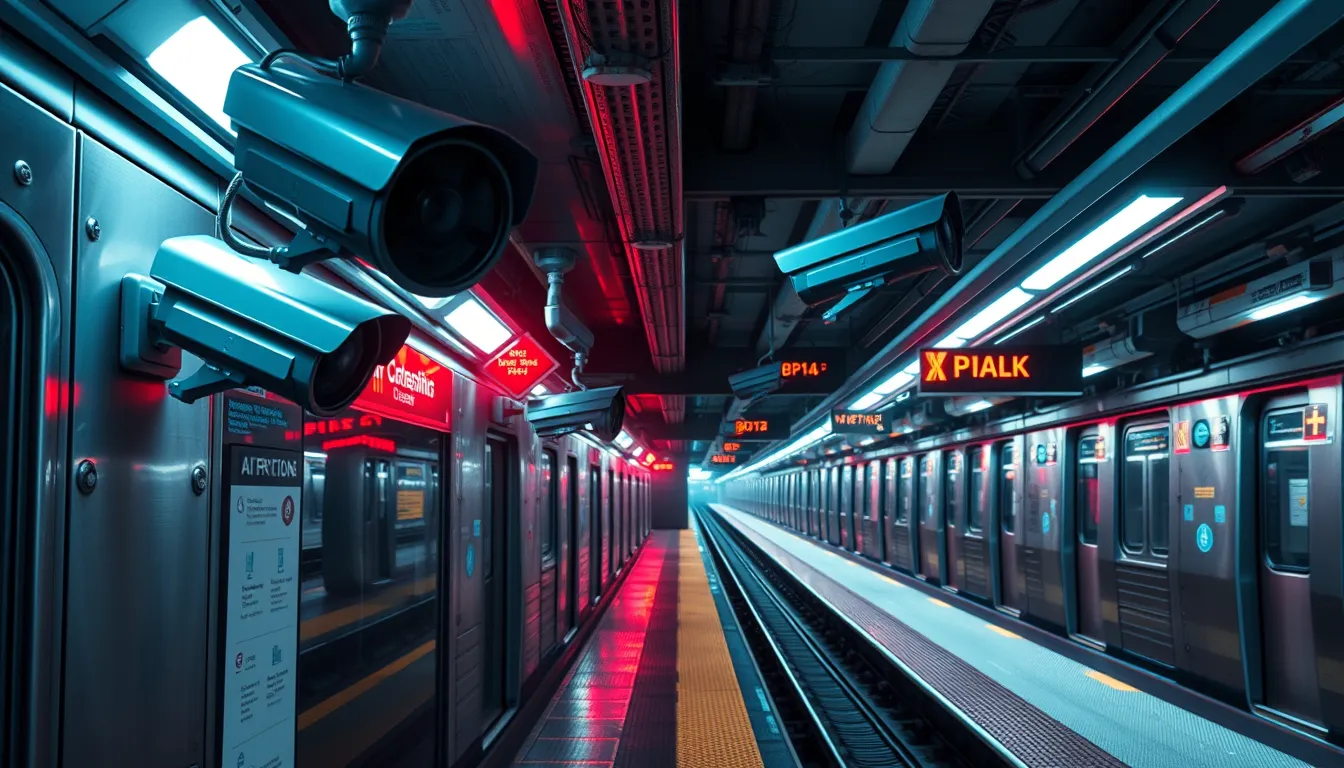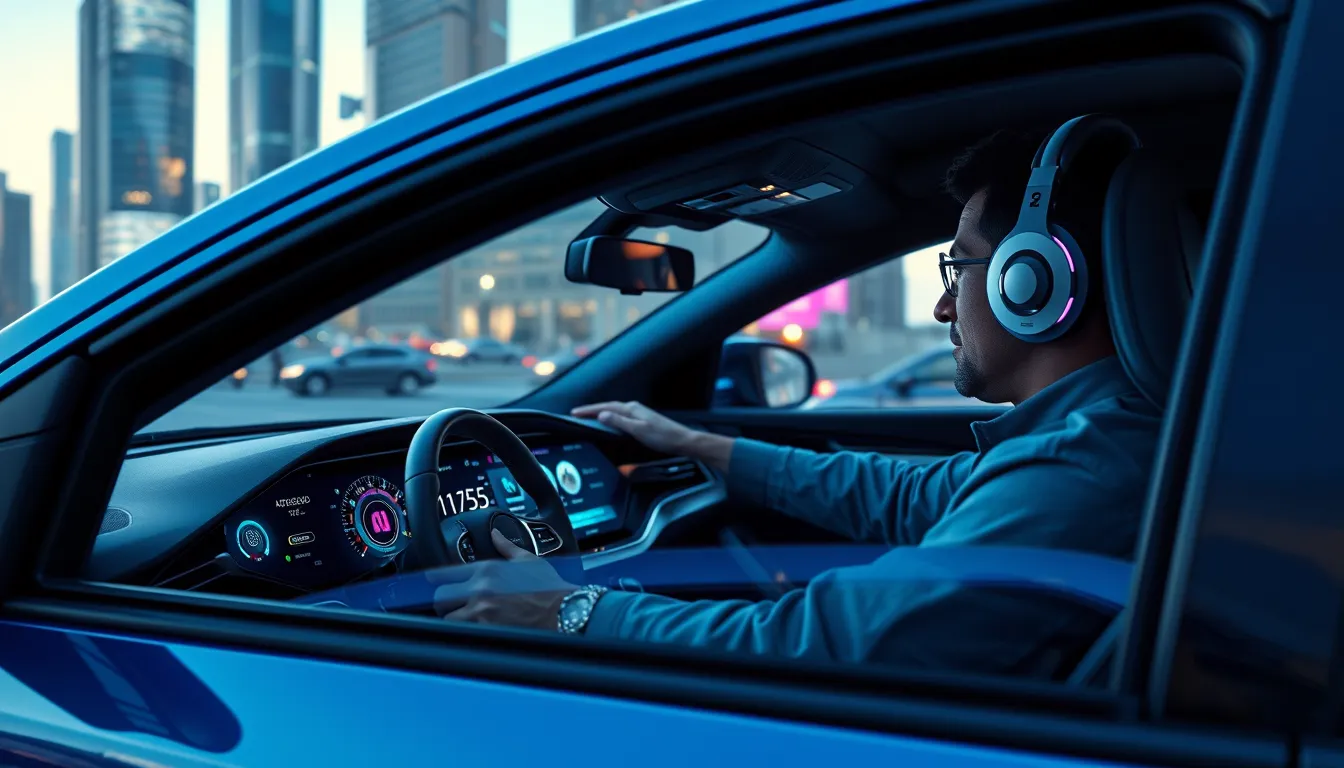Now Reading: AI-Powered Subway Cameras: Transforming Transit Safety
-
01
AI-Powered Subway Cameras: Transforming Transit Safety
AI-Powered Subway Cameras: Transforming Transit Safety

AI-Powered Subway Cameras: Transforming Transit Safety
Introduction: A New Age in Predictive Surveillance
In New York City, a groundbreaking initiative is underway to revolutionize public transit safety. City officials are now exploring the deployment of AI-powered subway cameras designed to predict and prevent transit incidents before they escalate. This innovative approach, grounded in predictive surveillance technology, leverages machine learning in transit to analyze real-time video feeds and flag potential issues. The integration of AI-powered subway cameras with existing surveillance infrastructure is set to transform the way safety is managed on one of the world’s busiest transit networks.
How AI-Powered Subway Cameras Enhance Transit Safety
The aim of this project is to harness advanced artificial intelligence to create a safer environment for daily commuters. The initiative involves installing sophisticated cameras equipped with machine learning algorithms capable of processing vast amounts of data from live video feeds. Key functions include:
- Monitoring crowd behavior and movement patterns
- Detecting anomalies and unusual activities
- Issuing early warnings to transit personnel and law enforcement
By identifying potential threats before they fully develop, this system provides a proactive solution to public transit safety challenges. The concept of using AI-powered subway cameras is not just about technology; it represents a fundamental shift towards predictive surveillance in urban environments.
The Role of Predictive Surveillance in Modern Transit Systems
Predictive surveillance, a core component of this initiative, uses historical and real-time data to predict and prevent transit incidents. This technique improves the response times of law enforcement and MTA safety technology by enabling instant alerts. It offers a dual advantage: enhancing security while simultaneously reducing the risk of false alarms. As part of this strategy, analysts are focusing on minimizing the ethical implications of predictive surveillance and addressing privacy concerns in AI public transit.
Technical Aspects and Integration
The implementation of AI-powered subway cameras involves overcoming several technical challenges:
- Camera Optimization: Adjusting angles and lighting to ensure high-quality data capture.
- Algorithm Training: Continuously refining machine learning models to accurately detect and interpret complex behavioral cues.
- Data Management: Ensuring that the system reliably processes vast quantities of video feed data in real time.
These technical endeavors underscore the importance of having robust AI models that can predict and prevent transit incidents effectively. The success of the initiative depends on the seamless integration of AI with established MTA safety technology, available on the official MTA website (https://new.mta.info/), and aligning with urban safety technology advancements.
Addressing Ethical and Privacy Concerns
While the benefits of employing AI-powered subway cameras are significant, the initiative also raises important ethical and privacy issues. Critics argue that extensive surveillance may lead to over-policing, particularly in communities that are already vulnerable. Privacy advocates are particularly concerned with the potential misuse of predictive surveillance and the possibility of misidentifying normal behavior as suspicious. To address these issues, experts recommend the following measures:
- Establishing clear guidelines for the use of AI in public spaces
- Ensuring transparency in how data is collected and algorithms are trained
- Implementing robust oversight mechanisms to safeguard civil rights
The Future of Safety in NYC Transit
The deployment of AI-powered subway cameras is part of a broader trend where cities around the globe are prioritizing smart technologies to enhance public safety. With urban areas facing growing challenges, such as increased population density and evolving security threats, the need for sophisticated monitoring systems has never been greater.
Several important advantages of this system include:
- Faster emergency response due to early detection of anomalies.
- Enhanced decision-making support for transit personnel using real-time alerts.
- Improved efficiency in managing public safety resources.
The long-tail keyword “predict and prevent transit incidents” is particularly relevant here, as it encapsulates the proactive nature of this technological intervention. At the same time, the discussion around the ethical implications of predictive surveillance encourages continuous dialogue among policymakers, technologists, and the public about balances between safety and privacy.
Collaboration and Community Impact
A successful integration of AI-powered subway cameras requires collaboration between various stakeholders, including city officials, technology experts, law enforcement, and the community. Engaging with communities and ensuring that their voices are heard is essential to refining the use of this technology.
Moreover, the initiative offers an opportunity to set global standards for the ethical use of predictive surveillance. By focusing on transparent governance and community engagement, New York City can lead the way in creating a model that other urban centers might follow.
Conclusion
The future of urban transit safety is poised to be transformed by the strategic implementation of AI-powered subway cameras and predictive surveillance. This initiative not only enhances public safety by predicting and preventing transit incidents but also opens up important conversations about privacy, ethics, and the responsible use of technology. As the project progresses, it will be vital to balance technological innovation with vigilant oversight to ensure that the benefits extend to all commuters without compromising individual rights.
In summary, the deployment of these advanced surveillance systems in NYC represents a significant step towards smarter, safer cities. With continuous refinement and active community participation, AI-powered subway cameras can serve as a blueprint for the future of public transit safety, blending cutting-edge technology with a commitment to ethical implementation and transparent governance.

























